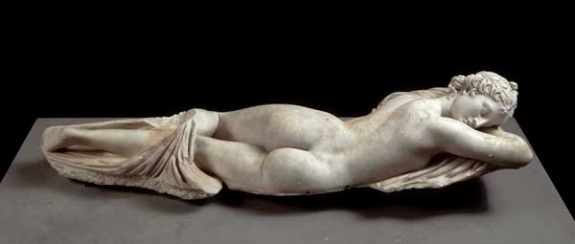One year on from the collapse of the five-year trial in Rome of Marion True, the former antiquities curator of the Getty, the directors of US museums that possess antiquities collections and the curators who are responsible for them face a multitude of challenges, one of which is the potentially negative publicity surrounding claims for the restitution of artefacts. An ordeal by trial in an Italian court is another (True was in the dock charged with conspiring to receive antiquities that had been illegally excavated and exported). In June 2010, it emerged that the public prosecutor’s office in Rome was undertaking a preliminary investigation into another American curator of antiquities, Michael Padgett from Princeton University Art Museum, along with former New York antiquities dealer Edoardo Almagià and two other co-defendants.
Although the Padgett case has gone quiet, the issue of museums’ complicity in looting, especially from Italy but increasingly from nations around the world, refuses to go away. The recent publication of Chasing Aphrodite (which focuses on decades of Getty acquisitions) reignited the debate, especially in the US. The book’s authors, Jason Felch and Ralph Frammolino, were widely quoted as saying: “For the past 40 years, museum officials [in the US] have routinely violated the spirit, if not the letter, of the Unesco treaty [designed to prevent looting], buying ancient art they knew had been illegally excavated and spirited out of source countries.”
So where does this leave museums with antiquities collections? Will curators work in a climate of fear, worried about their professional reputations or foreign prosecutions over past acquisitions? What will they do with collections, many of which contain objects without watertight provenance? At worst, some fear that antiquities collections could be sidelined, with directors and their trustees reluctant to invest in or research them.
Others, however, feel that the worst is now over, and that a new spirit of international co-operation is beginning to blossom. Perhaps in a show of confidence, the Cleveland Museum of Art reinstalled its collection of Greek and Roman art in 2010, and the Museum of Fine Arts (MFA) in Boston is renovating its ancient coin and jewellery galleries, says its director, Malcolm Rogers.
Returning loot
The plundering of Italy’s archaeological sites, which escalated in the 1970s, feeding the trade in looted objects, has become a cause célèbre—exacerbated by the fact that some of the best works have ended up in museums. Investigations of collections at major American museums have resulted in the restitution of numerous items to Italy: the first round of agreements in 2006 and 2007 included the return of 21 antiquities from the Metropolitan Museum of Art, New York; 40 from the J. Paul Getty Museum, Los Angeles; 13 from the Museum of Fine Arts, Boston; and eight from the Princeton University Art Museum. In 2008, 13 (in addition to one Gothic processional cross) were returned by the Cleveland Museum of Art. The Minneapolis Institute of Arts is in the process of returning its 2,500-year-old volute krater to Italy.
The Italian Ministry of Culture has responded, rewarding institutions by sending works to US museums on long-term loans and co-operating in special exhibition programmes and provenance research. “Our ability to borrow amazing works of art like the Sleeping Hermaphrodite, which has left Italy only once before, could not have happened without partnerships and our behaving responsibly,” Rogers says. It is one of 13 significant loans—nine from Rome and Naples—in “Aphrodite and the Gods of Love” (until 20 February 2012). Expectations of loans are an integral part of today’s restitution process. Even before the MFA returned the upper half of Weary Herakles to Turkey in September 2011, the New York Times reported that the museum hoped to borrow its lower half from the Antalya Museum.
Nowhere is international cultural co-operation more apparent than at the Getty, paradoxically the institution targeted in particular by the Italian authorities and subsequently the media in the 1995 antiquities scandal that led to the 2005 indictment of True. The Getty signed a “major long-term cultural collaboration” with Sicily in February 2010 and an agreement “creating a framework for cultural co-operation” with Greece in September 2011. The Getty and the Cleveland Museum of Art are now planning a major 2013 exhibition focusing on Sicily’s Classical and Hellenistic periods.
“The responsibility of 21st-century museum staff is to realise the fluidity of shared stewardship,” says Michael Conforti, the director of the Sterling and Francine Clark Art Institute and president of the Association of Art Museum Directors (AAMD) from 2008 to 2010. This means caring for objects that belong in theory to “an international museum community”. Creating a network “of institutions linked with ones abroad or archaeological sites in source countries” is “where the world is going” and will result in richer displays of antiquities. But, he adds, it will take time, as the American public needs to adjust to this new concept and having “periodic access to antiquities”.



